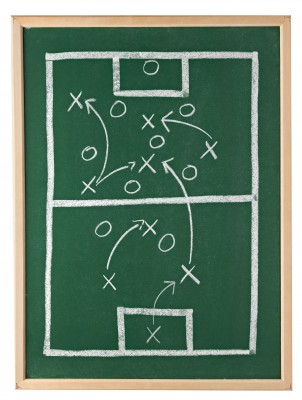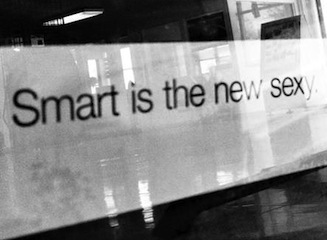“We’ve done deep dives with the shopper, really understanding her motivations, how she views her role in the home, and how she connects that to the shopping she does for her family”
“We followed this up with accompanied shops, observing every step of the shopping journey and then discussing with the shopper afterwards so we could really understand the “why” behind her behavior”
“We understand the opportunity: we need to intercept the shopper during the shopping trip and persuade her to purchase our brand”
These statements all came out of a research presentation made by a client last week. I’m sure we could all poke holes or questions about the methodology, but is there anything else in this that strikes you as odd?
The shopper is apparently always female.
She and her. All of the qualitative research had focused on women, because the area of interest was in-home.
Maybe this doesn’t surprise you, and, of course I had the added benefit of having had a chance to look at the quantitative in-store observations and interviews. I knew this simple, interesting fact. 40% of the category shoppers were men. In fact, for this core in-home occasion, for the clients core brand, 51% of shoppers were men.
 The majority of shoppers were being ignored.
The majority of shoppers were being ignored.
This client is a great bunch of people – really bright, really challenging, and really keeping us on our toes to deliver massive added value every time we work. So why is this? The simple answer is the stubborn resilience of paradigms.
In the same way that intellectually many of us have now got the point that consumers are not always shoppers yet articles which reference “the consumer in shopping mode” abound; I think we’ve also got the fact that men do shopping, and buy more than power drills and gadgets. Yet as I researched this blog I was fascinated as to the limits of the investigations into men as shoppers.
A year ago I quoted Saatchi and Saatchi X suggesting that up to 35% of grocery shoppers were men, but if you were to live by what you read, men shoppers would only be found online, on mobile, buying gadgets, appliances and grudgingly furniture. They certainly wouldn’t be found in supermarkets doing anything as demeaning as buying groceries.
And yet. There we are. I go to supermarkets and most guys I know do. Every report we see demonstrates men shoppers galore and yet, when we visualize in our minds the “supermarket shopper”, she is nearly always a she.
The danger of this paradigm is obvious. Just as any marketing campaign which ignored 40% of its target market would be sub-optimal at best, the same goes for shopper marketing. If we tune our brains into one way of thinking we naturally ignore others.
As marketers we are trained to personify our target market – to make them real – and the affinity that creates can be valuable. But by doing this our reference point becomes by default an approximation, which ignores many subtleties. This is fine as long as those subtleties are small, and are not forgotten. The meme of the housewife shopper has always been an approximation; but the errors inherent in that approximation were perhaps acceptable once: this is no longer the case when it ignores 40% of the potential market.
Do something for me. Just for one day, keep a note of all of the ‘facts’ you state about your target market. Write them down and then challenge that data as follows:
- Is this something we know for a fact?
- Is this something we think we know?
- What evidence do we have to support this?
- How much of an approximation is this?
- What percentage of the market doesn’t fit with this model?
And then write the facts down so they don’t get forgotten. Create archetypes’s and images and mood boards to get under the skin of the shopper. These are great. Use them to communicate bot across across your business and to agency partners and to create more engaging shopper solutions.
Just never forget that not all shoppers are the same. And that “archetype” is just that. An archetype.




